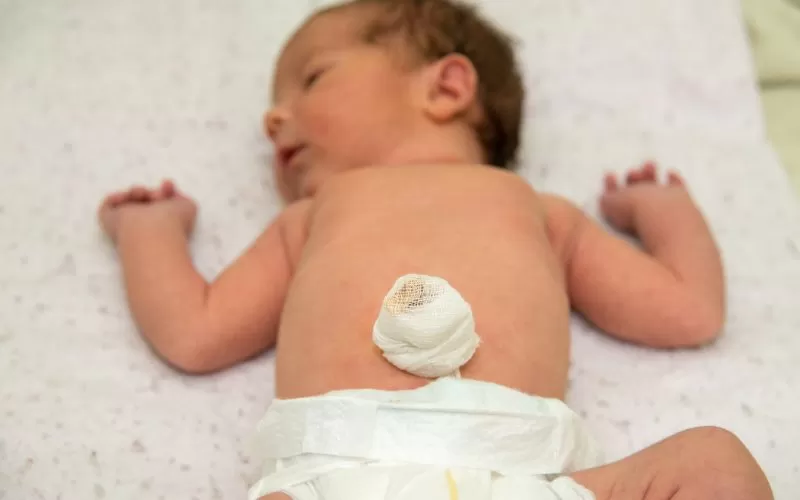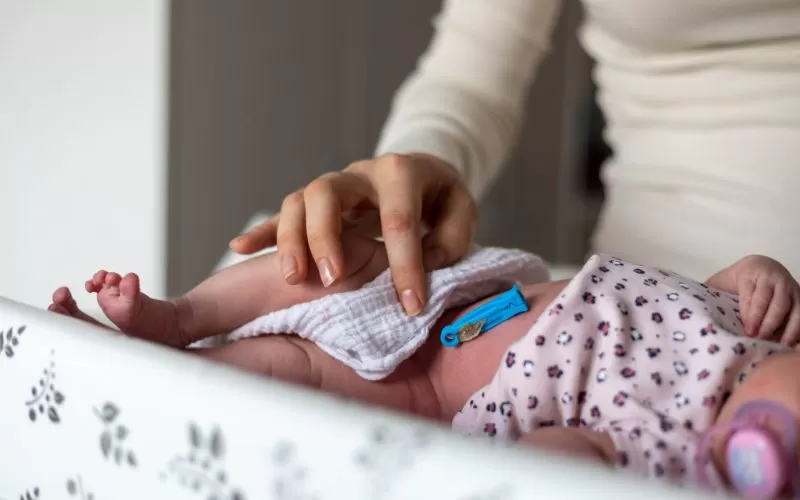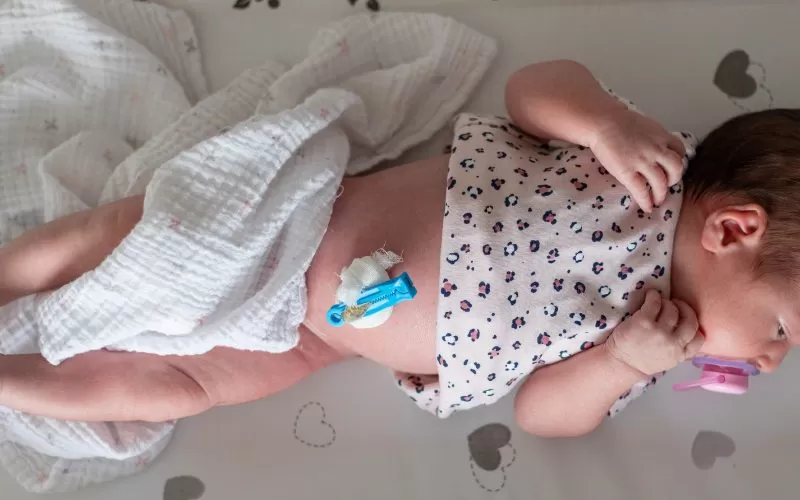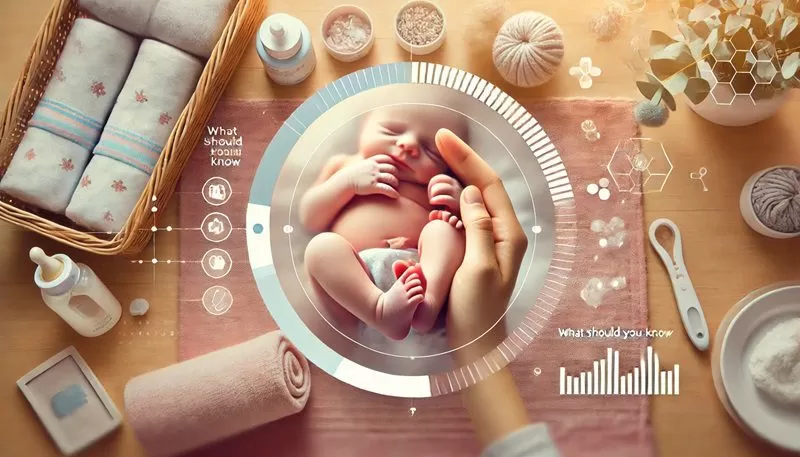Table of Contents
Baby Umbilical Cord Care Tips
Caring for your newborn’s umbilical cord is one of the first things you’ll learn as a new parent. While it may seem a bit daunting at first, understanding the basics of umbilical cord care can ease your worries. In this article, we’ll explain everything you need to know about your baby’s umbilical cord. We’ll cover what the umbilical stump is and why it’s important. You’ll also learn how to care for it properly to keep your baby safe and healthy. We’ll also recommend some products from our store that can help you during this phase of your baby’s development.
The umbilical cord plays a vital role during pregnancy, providing oxygen and nutrients to your baby. It’s important to understand the stages of umbilical cord care after birth to ensure your baby remains healthy. For more detailed information on proper umbilical cord care for newborns, you can visit this comprehensive guide from the Mayo Clinic, a trusted source in child healthcare.
Adjusting to life with a newborn can be challenging, especially when it comes to sleep. Sleep deprivation is a common issue for new parents, but there are effective strategies to help manage it. Establishing a consistent bedtime routine can signal to your baby that it’s time to sleep, making those nighttime feedings and diaper changes feel a bit less overwhelming. Additionally, consider sharing nighttime responsibilities with your partner, which can alleviate some of the pressure and help you both catch up on rest. For more detailed tips on combating sleep deprivation and enhancing your nighttime routine, check out our article on How to Deal With Sleep Deprivation After Baby.
Umbilical Cord Care – Is My Baby’s Umbilical Cord Normal? What’s an Umbilical Stump?

When your baby is born, the umbilical cord is clamped and cut. This cord connected your baby to the placenta during pregnancy. After cutting, a small piece called the umbilical stump is left behind. The umbilical stump will gradually dry out and fall off within 1 to 3 weeks after birth. Many parents wonder if their baby’s umbilical cord looks normal. This concern is common, especially when the appearance seems different than expected.
Typically, the umbilical stump changes from yellowish-green to brown or black as it dries. However, if you notice redness around the base, it could be a sign of infection. A foul odor or pus may also indicate an infection. In such cases, it is important to consult your healthcare provider.
One way to ensure proper care of your baby’s umbilical stump is by using our Soft Cotton Baby Bodysuits that allow the area to breathe, helping the stump dry out without irritation.
Umbilical Cord Care: Do’s and Don’ts for Parents

Caring for the umbilical stump requires a few simple yet essential steps. Following these do’s and don’ts can help prevent infection and promote healing.
Do’s:
- Keep it clean and dry: Use a clean, dry cloth to gently clean the area around the stump. If the stump gets wet during bath time, gently pat it dry.
- Allow airflow: Dressing your baby in loose-fitting clothing, like our Breathable Baby Onesies, helps allow air circulation to the umbilical stump, speeding up the healing process.
- Use a sponge bath: Until the umbilical stump falls off, it’s best to give your baby sponge baths rather than submerging them in water.
Don’ts:
- Don’t pull or tug: No matter how tempting it may be to speed up the process, never pull on the stump, even if it’s hanging by a thread. Let it fall off naturally.
- Don’t cover it with diapers: Make sure your baby’s diaper is fastened below the umbilical stump to avoid irritation. You can use specialized diapers like our Umbilical Cord-Friendly Diapers, which are designed to prevent rubbing.
By following these simple guidelines, you can ensure your baby’s umbilical cord care goes smoothly.
As you navigate the early days with your newborn, it’s essential to be prepared for common challenges, such as diaper blowouts and leaks. Understanding how to effectively manage these situations can help keep your baby comfortable and your baby’s environment clean. For practical tips and strategies, check out our guide on Managing Diaper Blowouts and Leaks. This resource provides insights into choosing the right diapers, ensuring a proper fit, and techniques for quick clean-ups, making your parenting journey a little smoother.
Handling Umbilical Cord Care for Newborns: What to Expect

During the healing process, you may notice a bit of dried blood or fluid on the umbilical stump—this is completely normal. It’s also important to note that once the stump falls off, you may see a small amount of oozing, but it should heal quickly. Keep monitoring the area for any signs of infection, such as persistent redness, warmth, or swelling.
For daily cleaning, our Fragrance-Free Baby Wipes are gentle and effective for wiping the surrounding area, ensuring cleanliness without harsh chemicals.
Umbilical Cord Care – Is My Baby’s Umbilical Cord Normal?

It’s natural to be concerned about whether your baby’s umbilical cord looks the way it should. Many parents are surprised by the appearance of the umbilical stump, but as long as it’s healing without infection, it’s perfectly normal. If you have any concerns, such as prolonged redness or discharge, consult your pediatrician to ensure everything is progressing as it should.
To help maintain proper hygiene and care for your baby, using breathable, soft clothing like our Soft Cotton Baby Bodysuits can prevent irritation and keep the umbilical stump in optimal conditions for healing.
As you navigate the early stages of your baby’s life, it’s essential to be aware of various health concerns that may arise. One common condition in newborns is jaundice, which is characterized by a yellowing of the skin and eyes. Understanding the symptoms, causes, and treatment options for jaundice is crucial for every parent. For detailed insights into this condition and how it can affect your baby, check out our comprehensive guide on Jaundice in Newborns – Symptoms, Causes, and Treatment.
Umbilical Cord Care: Do’s and Don’ts for Parents Recap
To summarize, taking care of your baby’s umbilical cord involves a few key practices:
- Keep the stump clean and dry, allowing it to heal naturally.
- Avoid submerging your baby in water until the stump falls off.
- Always dress your baby in loose-fitting clothing to promote airflow around the area.
By using products like our Breathable Baby Onesies, you can promote a smooth healing process. Our Umbilical Cord-Friendly Diapers help prevent unnecessary irritation to the delicate stump. These products are designed to provide comfort and care during this sensitive time.
Handling Umbilical Cord Care for Newborns: Final Thoughts

As the umbilical stump dries and eventually falls off, your baby’s belly button will form and heal. This process is one of the many milestones in the early weeks of your baby’s life. Being informed and prepared with the right knowledge and tools can make this phase easier for you and your little one.
Remember, the key to handling umbilical cord care effectively is to keep the area dry, allow air to circulate, and keep an eye on any potential signs of infection. By following these steps, you’ll ensure your baby’s umbilical area stays healthy and heals properly.
As a new parent, understanding your baby’s umbilical cord is essential, but it’s also important to prepare for adventures outside the home. Traveling with a baby requires careful planning and the right gear to ensure both comfort and safety. From selecting the best travel crib to finding the perfect diaper bag equipped with all the essentials, knowing what to pack can make your journey much smoother. To learn more about the necessary gear and tips for a hassle-free travel experience with your little one, check out our guide on How to travel with a baby, and the gear you need.
Conclusion
Taking care of your newborn’s umbilical cord may seem challenging, but with the right approach and products, it’s easier than you think. By following these tips and using items like our Soft Cotton Baby Bodysuits, Umbilical Cord-Friendly Diapers, and Fragrance-Free Baby Wipes, you can ensure proper umbilical cord care and help your baby transition smoothly through this important stage.
Ensuring that you’re well-informed and prepared for umbilical cord care is essential for keeping your newborn healthy. Be proactive in monitoring the area and taking action if you notice anything unusual. With these insights and products from our store, you can confidently care for your baby’s umbilical cord and ensure a safe and healthy start to life.

